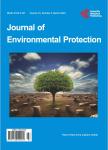Biosorption and Chemical Precipitation of Lead Using Biomaterials, Molecular Sieves, and Chlorides, Carbonates, and Sulfates of Na &Ca
Biosorption and Chemical Precipitation of Lead Using Biomaterials, Molecular Sieves, and Chlorides, Carbonates, and Sulfates of Na &Ca作者机构:Chemistry Department School of Science Technology Engineering and Mathematics Dillard University New Orleans USA.
出 版 物:《Journal of Environmental Protection》 (环境保护(英文))
年 卷 期:2013年第4卷第11期
页 面:1251-1257页
主 题:Heavy Metals Chemisorption Biochar Fishbone Molecular Sieves Bioremediation Precipitation
摘 要:Lead, a heavy metal, is a well known contaminant in water and has been reported to cause serious health implications to humans, animals, and plants. One of the processes for heavy metal remediation of contaminated water is chemical precipitation. In this present work, chemical precipitation of lead from a contaminated aqueous matrix by chlorides, carbonates, and sulfates of sodium and calcium was compared to lead removal by molecular sieves and biomaterials (fishbone, grape and spinach). The order of lead removal from 1400 ppm of lead solution is sodium chloride (31%) calcium chloride (62%) burnt grape (83%) charred spinach (92.3%) sodium phosphate (95.8%) sodium carbonate (97%) molecular sieve sphere (98.7%) sodium sulfate (99.3%) s ground (99.71%) fishbone (99.87%)



